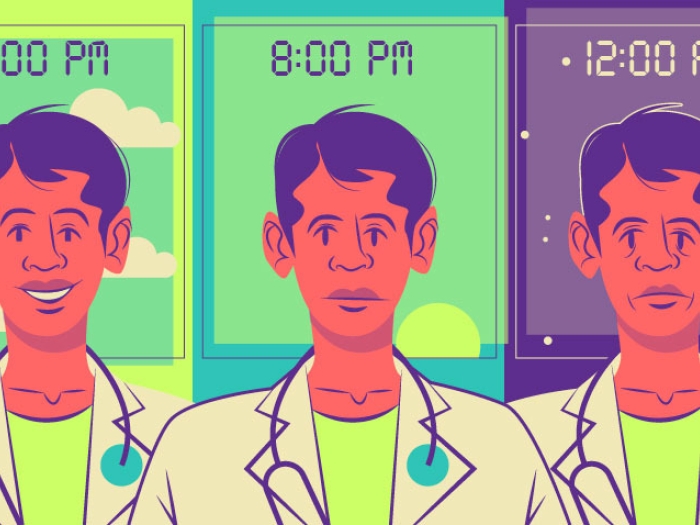Ensuring that health care systems are ready and properly staffed to provide acute care requires teamwork and diligence.
7:00 AM

When you're sick, you don't want to wait months, weeks or even days until the next available appointment at the doctor's office. Whether it's a cold or sudden worsening of a chronic condition like asthma or diabetes, or an unexpected injury, time is of the essence.
MORE FROM THE LAB: Subscribe to our weekly newsletter
Which is why the acute care system should be responsive in providing the care you need.
But countless Americans struggle to receive acute care promptly because they don't have health insurance, money, a doctor — or, sometimes more pressing, a doctor with an open appointment.
Although the health care system has historically focused on chronic disease management, the focus has more recently shifted to address the importance of preventive care.
And while both approaches may reduce the need for acute care, emergency room visits have consistently increased in the United States. As baby boomers age and health care costs rise, the challenge of getting acute care is not going away for a system that is inadequately prepared to meet unscheduled health care needs.
Solving this crisis, then, requires a new way of thinking about how acute care is provided and how costs can be contained to make such care more accessible and affordable.
Addressing challenges and opportunities
A good place to start would be to recognize the importance of making acute care a health reform and policy priority. Doing so will affect both daily care and care provided during catastrophic settings, such as terrorist attacks and disasters, and is critical to our national health security.
Without neglecting efforts to prevent and manage diseases — and to increase primary care capacity to address acute care needs in office settings — addressing the needs of patients who end up in urgent care, emergency rooms and hospitals for acute care should be a priority.
Fortunately, this work has already begun.
The Emergency Care Coordination Center in the U.S. Department of Health and Human Services funded work that developed a conceptual model of acute care. And the National Quality Forum is examining how to create effective transitions into and out of the acute care system.
Health care providers, researchers and other stakeholders also have come together in the recently instituted Acute Care Research Unit at the University of Michigan to help bridge these gaps and find acute care solutions.
One of the key challenges this unit will address is the lack of coordination in acute care delivery. This includes poor communication among doctors' offices, emergency rooms and hospitals — preventable oversight that may result in duplicated lab tests, medical imaging and medications. Such disconnect also could lead to poor patient follow-up and, ultimately, higher costs, reduced accessibility and unsatisfactory patient outcomes.
Still, many researchers looking for answers often ignore the continuum of care, preferring to focus on only one setting. Effective solutions for multifaceted, complex issues related to acute care delivery will require accounting for the challenges of all settings concurrently by leveraging setting-specific strengths and carefully examining patient preferences.
But this can only be done if the full complement of care delivery sites — doctors' offices, urgent care clinics, emergency rooms and hospitals — is at the table partnering with other key stakeholders such as payers and patients exchanging ideas on how to solve acute care challenges.
Collaboration in care
This coordinated approach is more likely to result in effective solutions for increasing urgent and emergency care capacity, preventing hospitalizations for acute care and hospital readmissions, finding alternatives to hospitalizations and ensuring timely patient follow-up.
SEE ALSO: The More Doctors Interact, the Better Their Patients Do
Among the ways to achieve this: asking doctors' offices to offer same-day appointments, building more urgent care sites, using the emergency room as a focus for efforts to reduce hospitalizations and making home-based care more affordable.
Efforts such as the Centers for Medicare & Medicaid Services' recent announcement that primary care physicians will be reimbursed at a higher rate are promising. Other solutions may lie in strategies now being tested in local communities by accountable care organizations.
Reforming acute care delivery will require making it a policy and research priority — as well as financial commitment from government and the private sector, and building bridges between care delivery silos to consider solutions that span the acute care continuum. These are the critical first steps toward solving the acute care crisis.
This article was originally published on TheHill.com.

Explore a variety of health care news & stories by visiting the Health Lab home page for more articles.

Department of Communication at Michigan Medicine
Want top health & research news weekly? Sign up for Health Lab’s newsletters today!





